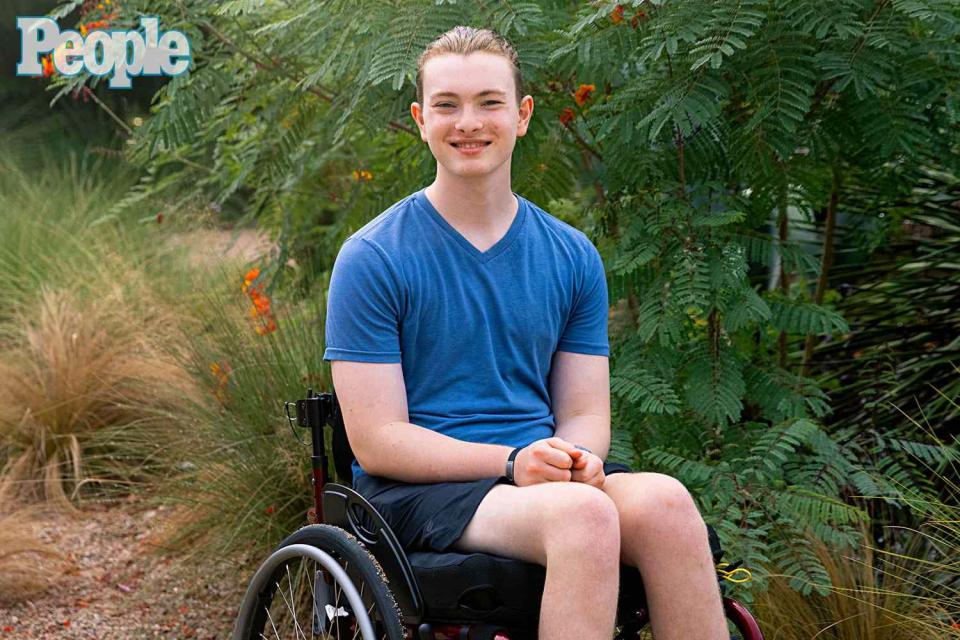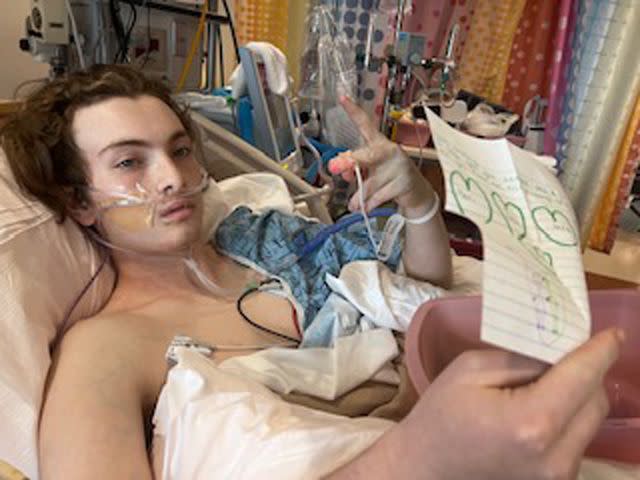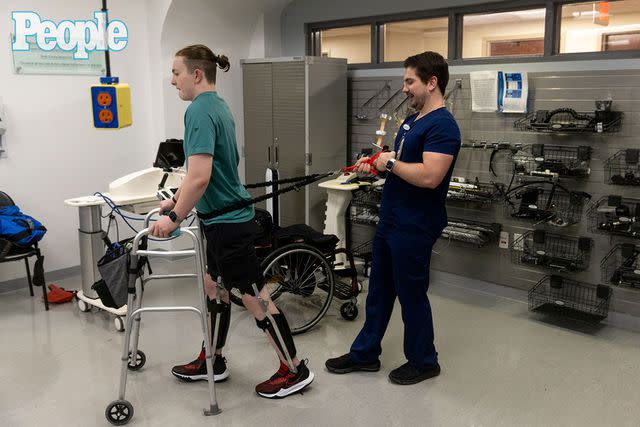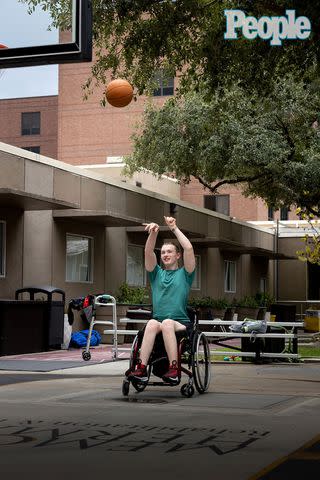How the Texas Teen Who Died and Came Back to Life Helped Reveal a Dangerous Family Heart Condition (Exclusive)
After dying and coming back to life, Sammy Berko, 17, was diagnosed with a rare genetic heart condition, catecholaminergic polymorphic ventricular tachycardia (CPVT)

Ilana Panich-Linsman
Sammy BerkoSammy Berko had just reached the top of a rock climbing wall at a gym near his Houston, Texas home in January 2023 when he went limp in his safety harness. After nearly two hours of CPR to try to bring the teen back from cardiac arrest, doctors pronounced Sammy dead. His parents were told to say goodbye.
For Sammy's parents Jennifer and Craig it felt like their nightmare was happening all over again. In 2019, they had lost their 10-year-old son, Frankie, when he died suddenly after a seizure. But then, another shock: Sammy moved. And then his pulse started again. After 24 hours in the ICU, Sammy, now 17, woke up.
In the search for an answer as to why the seemingly healthy teen collapsed, doctors ended up solving the mystery of Frankie's death - and discovered a dangerous family heart condition that also threatened Jennifer's health.
After Sammy’s cardiac arrest, doctors ordered genetic testing for the whole family. (Frankie had genetic material remaining from a DNA trial he was supposed to take part in.) Sammy, Jennifer and Frankie all came back positive for a rare genetic heart rhythm condition known as catecholaminergic polymorphic ventricular tachycardia (CPVT), which can cause fainting, seizures and sudden cardiac arrest in otherwise healthy people.
“It’s a shocking diagnosis,” Jennifer, 47, tells PEOPLE in this week’s issue. “But finally, for the first time in three and a half years, what happened to Frankie make some sense to us because we could never understand why he had a seizure and his heart stopped. Usually you have a seizure and then you come out of it. That was the part that nobody, not one emergency worker, not one doctor, nobody could understand."
CPVT is triggered by exercise, stress or excitement. “The adrenaline trigger can cause the heart to go out of control into a chaotic, dangerously fast rhythm, ” explains Dr. Michael Ackerman, genetic cardiologist at the Mayo Clinic. “The warning sign is an exercise-triggered faint that came out of nowhere: one minute they were 90 meters into the 100 meter dash, but on the 91st meter, down and out they went, or they're climbing a gym rope at physical education class and halfway up, they fall off."

Jennifer Berko
Sammy BerkoAckerman, who didn’t treat Sammy, notes that CPVT is “not a common syndrome, but it's a missed one,” says Dr. Ackerman, who didn’t treat Sammy, "We in the field have a lot of work to do to increase the awareness."
Sometimes, he says, someone can faint suddenly "and 10 seconds later you wake back up all by yourself and you're fine again, and because they're fine again, nobody acts on it."
About 1 in 10,000 people are affected by the syndrome, but it is often missed because it doesn’t show up on an electrocardiography (ECG). Instead, someone who has suddenly fainted or seized with no clear cause should have a treadmill or bicycle stress test, which can reveal a CPVT heart rhythm pattern. The condition could then be confirmed with genetic testing.
Encouraging stress testing for any unexplained exercise-induced fainting episodes or exercise-induced unexplained seizures “would have a profoundly powerful effect on decreasing tragedies,” says Ackerman. "That's how you save lives."
Once diagnosed, CPVT can be treated “very effectively," he says. “That's the beauty of this disease is it's incredibly treatable,” Ackerman says. Beta blocker medication can block the flow of adrenaline and doctors can perform a "minimally invasive" surgery through the left armpit called a left cardiac sympathetic denervation, which neutralizes the nerves releasing adrenaline.
Sammy and his mother are both on beta blocker medication, and Sammy underwent a sympathectomy,
After diagnosis and treatment, patients with CPVT are able to return to the activities they enjoy. For Sammy, who was left with paralysis on his lower body and for now uses a wheelchair, that includes playing basketball and drumming for his high school band.

Jennifer Berko
Craig, Sammy, Frankie and Jennifer Berko in 2019.“I want to get as close to how I was before, if I can,” Sammy tells PEOPLE. “No matter what happens, you can still find a way to get through it.”

Ilana Panich-Linsman
Sammy Berko working with physical therapistsDr. Christina Miyake, who treated Sammy, says that when it comes to his recovery, “if anyone can do it, he can,” noting how vital treatment was after his diagnosis.
“Obviously the main concern are these arrhythmias from CPVT and by being able to diagnose that for Sammy and get him on the correct treatment, we've completely been able to control the abnormal heart rhythm and he's able to participate in all of his activities right now,” she says. “He's able to go to school. He's doing physical therapy, all the things that he needs to do. “

Ilana Panich-Linsman
Sammy Berko photographed for People in September 2023.Miyake continues, “People worry sometimes that with all of that activity, could that trigger the arrhythmias and I feel like we've been able to address that and help him with that and let him be back to as much of a normal kid as he can.”
For more on Sammy Berko's story, pick up the latest issue of PEOPLE, on newsstands Friday, or subscribe here
For more People news, make sure to sign up for our newsletter!
Read the original article on People.

